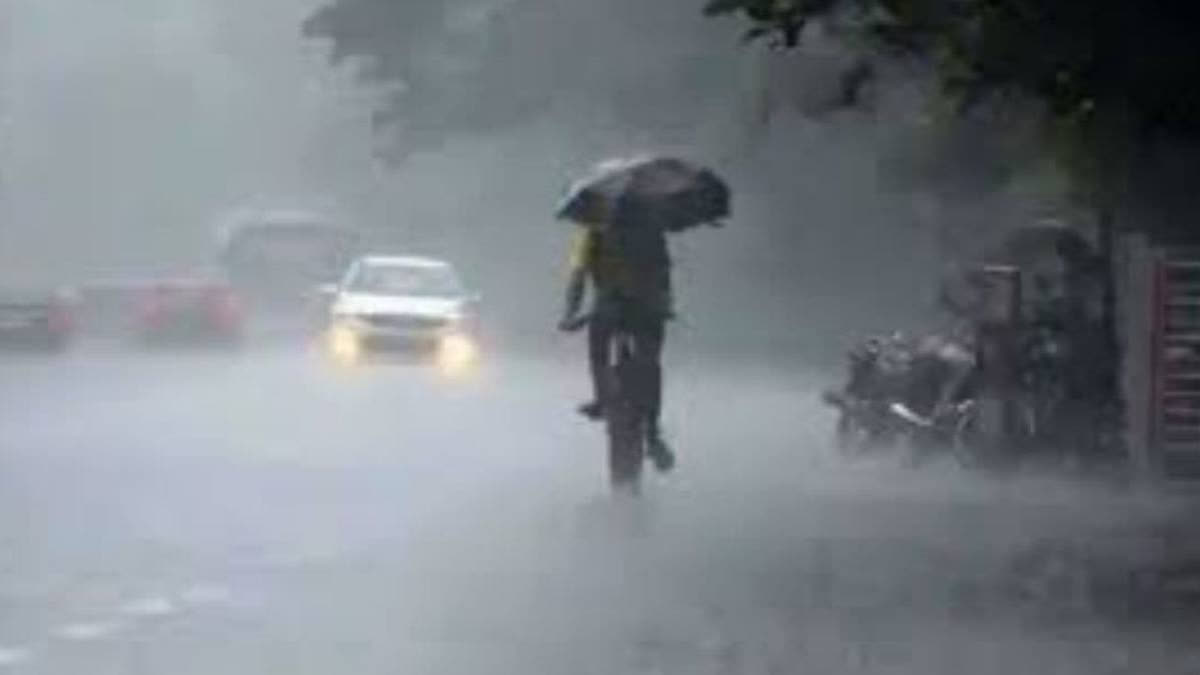New Delhi:The southwest monsoon is beginning to retreat, with the Indian Meteorological Department (IMD) announcing its withdrawal from parts of Rajasthan, Haryana, Punjab and certain regions in Jammu & Kashmir, Ladakh and Himachal Pradesh over the next few days.
Currently, a weather trough stretches from the Comorin area to South Coastal Karnataka while a cyclonic system is over northeast Assam. This combination is expected to bring widespread rainfall in several regions.
Northeast India:The IMD predicts light to moderate rainfall throughout the week in the northeast. On October 3, heavy rainfall is likely in Arunachal Pradesh, Assam and Meghalaya. Residents should also prepare for scattered rainfall in the Andaman & Nicobar Islands and in Sub-Himalayan West Bengal and Sikkim.
Warnings are in place for heavy rainfall from September 30 to October 4 in several northeastern states, including Nagaland, Manipur, Mizoram and Tripura, with some areas expecting up to 27 cm of rain.
South Peninsular India: In South Peninsular India, light to moderate rainfall is expected in Coastal Andhra Pradesh, Yanam and Karnataka. Isolated heavy rainfall may occur in Coastal and North Interior Karnataka, Tamil Nadu and Puducherry.
Northwest and Central India:In contrast, Northwest, West and Central India will likely see a dry spell over the next week, with no significant rainfall expected. Minimum temperatures are above normal in several regions, especially in East Rajasthan.
No Rain in New Delhi:The monsoon season in Delhi is experiencing a notable delay, with no rain reported in the national capital. Typically, the monsoon ends around September 25, but this year, the withdrawal began on September 23 in Rajasthan and Gujarat, affecting the timeline in Delhi.
The Indian Meteorological Department (IMD) has not provided a specific date for when the monsoon will officially retreat from the city. Currently, the monsoon continues to impact parts of Rajasthan and Gujarat, including areas like Firozpur, Sirsa and Ajmer. An announcement regarding the end of the monsoon season in Delhi is expected later this week.
Current Rainfall and Temperature: From September 29 to 30, significant rainfall was recorded in South Interior Karnataka, Gujarat and Tamil Nadu. The highest temperature was 38.5°C in K Paramathy, Tamil Nadu, while the lowest was 20.4°C at Delhi Ridge.
Residents in affected areas are advised to stay alert for weather updates, particularly in the northeast where heavy rains may lead to flooding and other weather-related hazards. Fishermen are warned against venturing into rough sea conditions along the coastal regions.
According to India Meteorological Department data, the 2024 southwest monsoon season officially ended on Monday with India recording 934.8 mm rainfall, 108 per cent of the long-period average and the highest since 2020. Central India received 19 per cent more rainfall than the long-period average for the region, the southern peninsula recorded 14 per cent more than normal, and northwest India saw 7 per cent more than usual.
East and northeast India registered 14 per cent less rainfall than normal, the data showed. The country experienced a rainfall deficit of 11 per cent in June, followed by an excess of 9 per cent in July, 15.7 per cent in August, and 10.6 per cent in September.
In the 2023 monsoon season, India recorded 820 mm rainfall, which was 94.4 per cent of the long-period average of 868.6 mm. The country logged 925 mm of rainfall, 106 per cent of the long-period average, in 2022; 870 mm in 2021; and 958 mm in 2020.
The IMD had predicted above-normal rainfall (106 per cent of the long-period average) for the monsoon season this year. It also accurately forecasts below-normal monsoon rainfall for northeast India, normal rainfall for the northwest and above-normal rainfall for central and southern peninsular regions.
The monsoon is critical for India's agricultural sector, with 52 per cent of the net cultivated area dependent on it. This primary rain-bearing system is also essential for replenishing reservoirs that provide drinking water and support power generation across the country. (With agency inputs)
Read more:IMD Issues Alert For Heavy Rains In Delhi-NCR, UP, Bihar And Rajasthan
